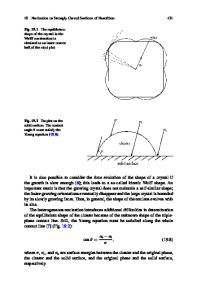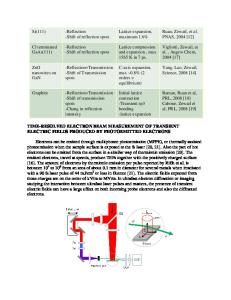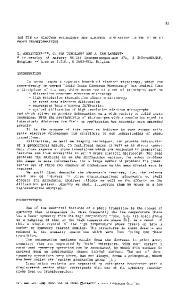Ultra-fast Time-Resolved Electron Diffraction of Strongly Driven Phase Transitions on Silicon Surfaces
- PDF / 1,048,432 Bytes
- 8 Pages / 612 x 792 pts (letter) Page_size
- 78 Downloads / 332 Views
1230-MM03-09
Ultra-fast Time-Resolved Electron Diffraction of Strongly Driven Phase Transitions on Silicon Surfaces Simone Möllenbeck, Anja Hanisch-Blicharski, Paul Schneider, Manuel Ligges, Ping Zhou, Martin Kammler, Boris Krenzer, and Michael Horn-von Hoegen Department of Physics and Center for Nanointegration Duisburg-Essen (CeNIDE), University of Duisburg-Essen, D-47057 Duisburg, Germany ABSTRACT The dynamics of strongly driven phase transitions at surfaces are studied by ultra-fast time-resolved reflection high energy electron diffraction. The surfaces are excited by an intense fs-laser pulse (pump) and probed by an ultra-short electron pulse with variable time delay. The order-disorder phase transition from a c(4 × 2) to a (2 × 1) of the bare Si(001) surface shows a transient decrease of the intensity of the c(4 × 2) spots which recovers on a time scale of a few hundred picoseconds indicating the excitation of the phase transition. On Si(111) a monolayer of Indium induces a (4 × 1) reconstruction which undergoes a Peierls like phase transition to a (8 × "2") reconstruction below 100 K. Upon laser excitation with a fluence of 3.4 mJ/cm2 at a temperature of 72 K the phase transition was strongly driven. The (8 × "2")-diffraction spots instantaneously disappears, while the intensity of the (4 × 1)-spots increases. This increase of the (4 × 1) spot intensity excludes an explanation by the Debye-Waller-Effect and is evidence for a true structural phase transition at a surface. INTRODUCTION Phase transitions at surfaces are subject of intense research in surface science for decades. While the equilibrium behavior is well understood little is known so far about the dynamics of strongly driven phase transitions far away from thermal equilibrium [18, 19]. In order to study the transient non-equilibrium behavior we set up an experiment for ultra fast electron diffraction at surfaces [1- 5]. The surface sensitivity in a RHEED (reflection high energy electron diffraction)-geometry is utilized to analyze the structural dynamics of bare surfaces or monolayer adsorbate systems on a ps-timescale upon excitation by fs-laser pulses in a pump probe scheme. In this paper we will present first results on time resolved measurements of the dynamics of strongly driven surface phase transitions. We studied as examples the famous order-disorder phase transition from a c(4 × 2) to a (2 × 1) of the bare Si(001) surface [7- 9] and the Peierls like phase transition from (8 × "2") to a (4 × 1) reconstruction on Indium terminated Si(111) [14- 16].
Figure 1: In a pump-probe setup a fs-infrared laser pulse is split into two parts. The higher intensive part of the laser pulse is used to excite the sample surface. The second part of the laser pulse traverses a delay line of variable length before it is frequency-tripled and then used to generate photoelectron bunches in an electron gun. By a variation of the delay line length, the time lag between the laser pump and the electron probe pulse can be changed. The dynamics of the surface structur
Data Loading...









